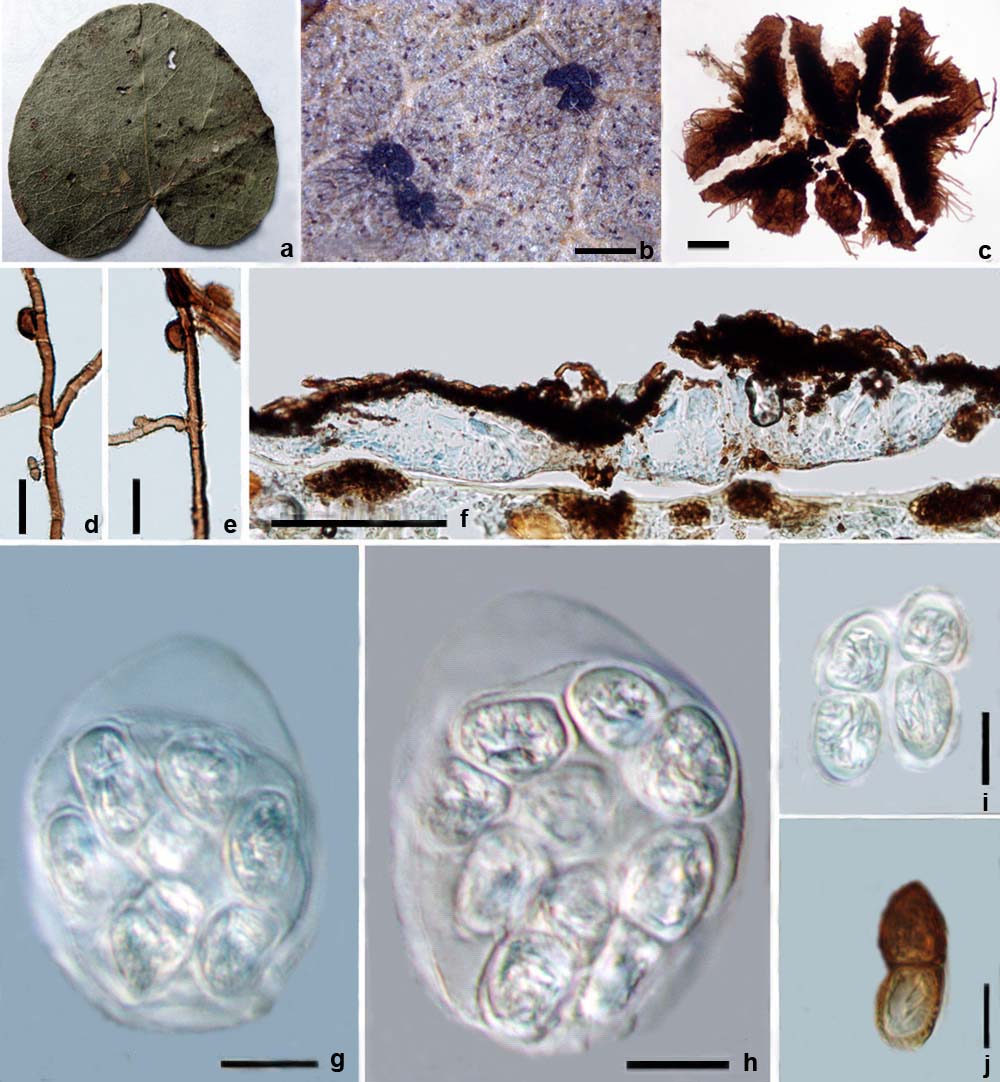Lembosia cissampeli (Hansf.) Hongsanan & KD Hyde, comb. nov. Index Fungorum number: IF550719.
≡ Viegasia cissampeli (Hansf.) Bat., Bol. Secr. Agric. (Pernambuco) 18: 32 (1951)
Type: IMI 5135.
Epiphytes on the upper surface forming rare scattered blackened regions. Superficial hyphae abundant on the leaves, with appressoria. Appressoria circular, lateral. Sexual state: Thyriothecia 390–510μm, solitary, superficial, easily removed, Y-shaped, black with filamentous fringe, opening by longitudinal or Y-shaped dehiscence. Upper wall comprising flexuose hyphae, radiating from the ostiole to the rim, base poorly developed. Hamathecium lacking pseudoparaphyses. Asci 36–42×25–32μm (x = 40×29μm, n=10), 8-spored, bitunicate, subglobose to globose, apedicellate, apical region of asci usually with a thick opaque region lacking an ocular chamber. Ascospores 22 28×9–13μm (x = 25×11μm, n=10), overlapping 3–5-seriate, conglobate, with broadly rounded ends, hyaline, brown when mature, 1-septate, highly constricted at the septum, wall rough. Asexual state: Unknown.
Material examined: UGANDA, on leaves of Cissampelos macronata A. Rich. (Menispermaceae), November 1940, C.G. Hansford (URM 6906, isotype; IMI 5135, isotype)
Notes: Hosagoudar et al. (2013) recollected this species from Cissampelos pareira L. in India and also found rare, unicellular, globose, entire to sublobate, 5–6×5–8μm appressoria. The validity of the genus was not discussed.
Fig. 1 Lembosia cissamepeli (URM 6906, isotype). a Herbarium specimen. b Thyriothecia on leaf surface. c Thyriothecia in lactic acid showing X-shaped openings. d, e Hypha with appressoria. f Vertical section of the thyriothecia in cotton blue reagent. g, h Asci. i, j Ascospores. Scale bars: b=0.5 mm, c=100μm, d, e=20μm, f=100μm, g–j= 10μm

